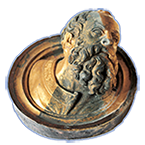Speaker
Description
The NECTAR facility at MLZ (NEutron Computed Tomography And Radiography) uses thermal and fission neutrons, the latter by inserting a uranium converter plate in front of the beam tube nozzle, which is unique world-wide. The mean energy of the high-energy spectrum at about 1.8 MeV is obtained via fission reactions in the converter plates placed in front of the window of the SR10 beam tube. The converter plate consist of highly enriched uranium (93% 235U)-silicide with a total weight of 540 g. While the converter is not in the ‘working position’, a thermal neutron beam is available.
The non-destructive inspection performed by neutron radiography and tomography using these two ranges of neutron energy can provide complementary information about the investigated objects. Penetration depth of fission neutrons is much higher as compared to cold or thermal neutrons, and thus gives more insight in large objects and samples containing strongly attenuating elements. In contrast, thermal neutrons provide a much better spatial resolution while still showing higher penetration depth than the cold neutrons available at ANTARES. Thus, due to high penetration depths, NECTAR is a well-suited instrument for investigation of inner structure of large, i.e. archaeological or paleontological objects. Because of the high sensitivity to light elements many applications are related to hydrogen or ammonia storage systems and observation of water distribution in e.g. large wooden samples.

